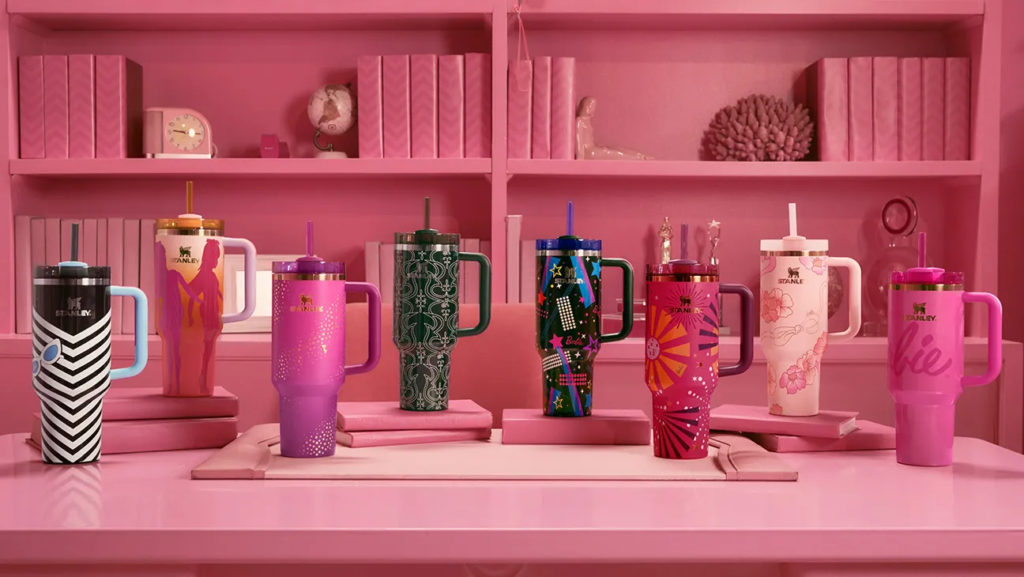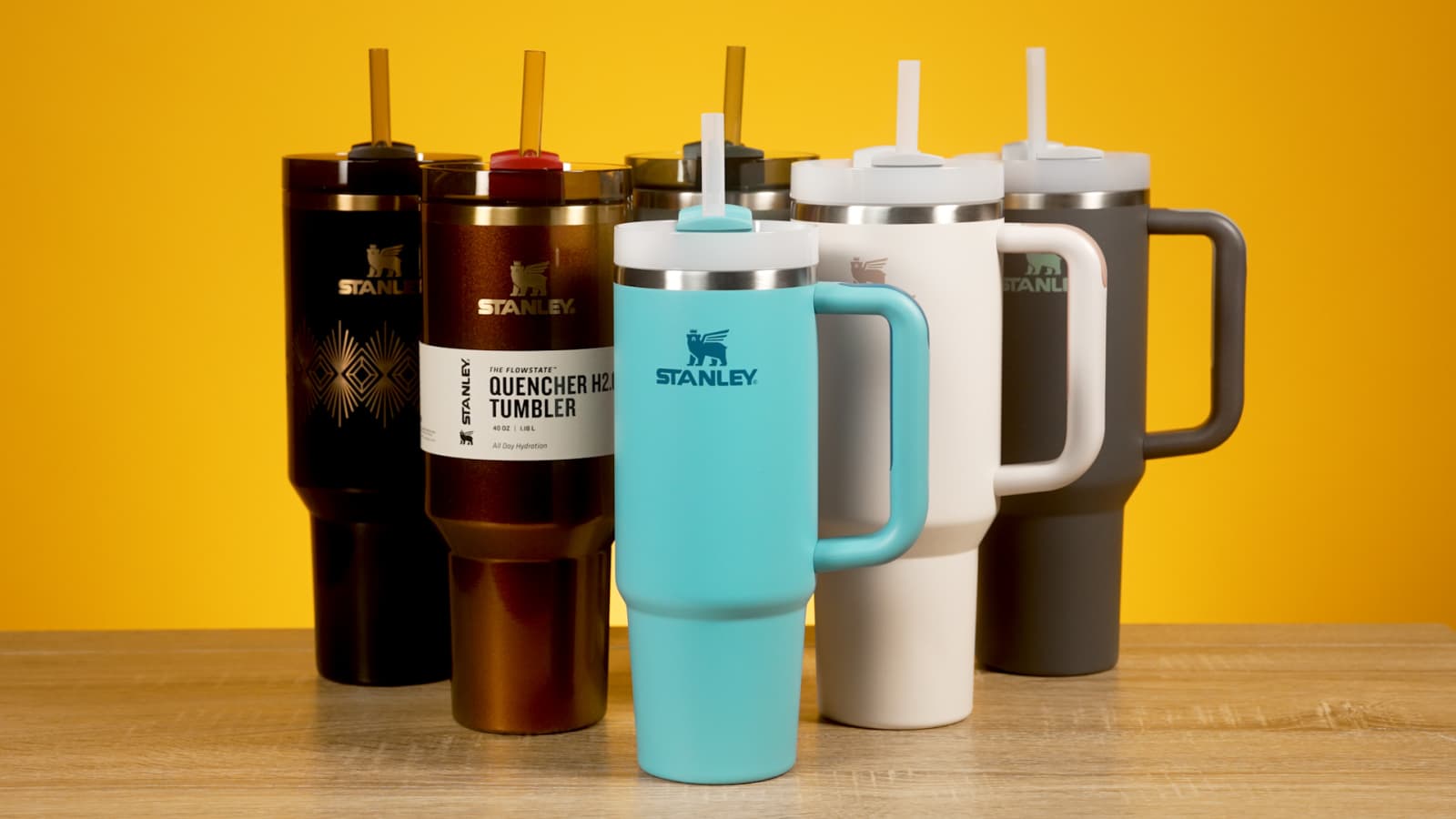Table of Contents
Company branding on Stanley helped turn a simple tumbler into a must-have item. The brand was once known for making tough and durable bottles for workers and outdoor lovers. But with smart branding, Stanley became a favorite for many people, including celebrities and social media users.
The company changed its focus by listening to customers and making products they wanted. From adding fun colors to working with influencers, Stanley used strong branding to grow fast. Today, it is not just a cup—it is a lifestyle product. Let’s explore how company branding on Stanley made it a huge success.
The History of Company Branding on Stanley
Stanley started as a brand for workers and outdoor lovers. It made strong, durable bottles for people who needed tough products. Over time, the brand realized it could reach more people by changing its image.
Stanley focused on making its products more stylish while keeping them strong. The company added new colors, designs, and sizes to attract a bigger audience. It wanted to be more than just a brand for workers; it wanted to be a brand for everyone.
Through smart marketing, Stanley became a well-known name in everyday life. People now see it as a trendy and must-have item, not just a tool for outdoor use.
How Social Media Helped Stanley Grow
Social media played a big role in making Stanley famous. The brand used platforms like Instagram and TikTok to show off its stylish tumblers. Many people started sharing their Stanley cups online, making the brand more popular.
Stanley worked with influencers to promote its products. When popular people used Stanley tumblers, more people wanted to buy them. This helped the brand grow fast.
The company also listened to customer feedback on social media. It made changes based on what people liked and wanted. This made customers feel connected to the brand.
Why Stanley’s Target Market Changed Over Time
At first, Stanley focused on workers, hikers, and campers. But as branding changed, the company started targeting more people. It wanted to sell to young adults, parents, and social media users too.
Stanley made its designs more modern and fun. It introduced pastel colors and stylish cups that looked great in photos. This helped attract a younger audience who loved sharing their Stanley cups online.
By expanding its target market, Stanley increased its sales. Now, people of all ages enjoy using its products every day.
The Role of Influencers in Company Branding on Stanley

Influencers helped make Stanley a trendy brand. Many famous people started using Stanley tumblers and sharing them online. This made their followers want to buy the same products.
Stanley sent free products to influencers and partnered with them for promotions. This helped spread the brand’s name faster. Seeing a favorite influencer using a Stanley tumbler made people trust the brand more.
Many influencers also gave honest reviews. They showed how Stanley products kept drinks hot or cold for hours. This helped people see the value of buying one.
How Stanley Used User-Generated Content for Branding
Stanley encouraged customers to share their photos online. Many people posted pictures of their tumblers, showing how they used them in daily life.
The company shared these photos on its official social media pages. This made customers feel special and created a strong connection between them and the brand.
User-generated content helped Stanley gain trust. People believed real customer reviews more than ads. This made more people want to buy Stanley products.
The Impact of Viral Moments on Stanley’s Popularity
Some moments made Stanley even more famous. For example, certain cup colors sold out quickly, creating a rush to buy them. This made more people interested in the brand.
Social media trends also helped Stanley grow. People started using special hashtags and challenges to show off their tumblers. This created excitement around the brand.
By keeping up with trends, Stanley stayed relevant. It knew what people liked and gave them more of it.
Why Stanley’s Color Choices Matter in Branding
Stanley’s bright and fun colors made the brand more attractive. Instead of just offering simple designs, it introduced new shades like pink, green, and purple.
These colors appealed to young buyers who wanted stylish drinkware. Many people also bought multiple colors to match their outfits or moods.
By focusing on color choices, Stanley made its products feel special. Customers felt like they were getting a personal and trendy item.
The Secret Behind Stanley’s Limited Edition Releases

Stanley created excitement by offering limited edition tumblers. These special designs made people want to buy quickly before they sold out.
Why Limited Editions Work:
- They create urgency, making people buy faster.
- They make customers feel special for owning a rare product.
- They keep the brand fresh with new designs.
Limited editions helped Stanley stand out from competitors. People waited eagerly for new drops, keeping interest high.
How Customer Engagement Strengthened Stanley’s Brand
Stanley focused on talking to its customers. It answered their questions, asked for feedback, and shared their photos online. This made people feel like part of the Stanley community.
Ways Stanley Engaged Customers:
- Responding to comments on social media.
- Hosting giveaways and contests.
- Letting customers vote on new colors or designs.
By making customers feel valued, Stanley built strong brand loyalty. People kept coming back because they felt connected to the brand.
What Other Companies Can Learn from Stanley’s Branding
Other brands can learn important lessons from Stanley’s success. One key lesson is the power of branding and social media.
Branding Tips from Stanley:
- Use social media to connect with customers.
- Work with influencers to reach new audiences.
- Create limited edition products to build excitement.
Stanley showed that branding is more than just a logo. It’s about making people feel something special when they use your product.
How Emotional Marketing Made Stanley More Popular
Stanley made people feel good about owning its products. The brand focused on lifestyle and memories, not just selling a cup.
How Stanley Used Emotional Marketing:
- Showed families using Stanley cups together.
- Created ads with adventure and fun moments.
- Shared customer stories about why they love Stanley.
By making people feel connected, Stanley built a strong brand that customers love and trust.
The Future of Company Branding on Stanley

Stanley’s branding will continue to grow. The company will likely bring out new designs, colors, and collaborations to stay trendy.
It may also expand into new markets or product categories. With its strong branding, the future looks bright for Stanley.
Company branding on Stanley has turned it into a household name. By focusing on marketing, customer engagement, and trends, Stanley will keep growing for years to come.
Conclusion
Company branding on Stanley is a great example of how a brand can grow by listening to customers. Stanley changed its marketing to reach new people, and now, it is more popular than ever. By using social media, influencers, and user-generated content, Stanley made its brand strong and trusted.
If a company wants to be successful like Stanley, it must pay attention to what customers love. Good branding is not just about selling products—it’s about building a community. When people feel connected to a brand, they will keep coming back for more!
FAQs
Q: What is company branding on Stanley?
A: It is how Stanley changed its marketing and image to reach new customers and become a popular lifestyle brand.
Q: Why did Stanley change its branding?
A: Stanley saw a chance to sell to a new audience, mainly women, and changed its products and marketing to fit their needs.
Q: How did social media help Stanley’s branding?
A: Stanley used influencers, customer posts, and viral content to grow its brand and connect with fans.




